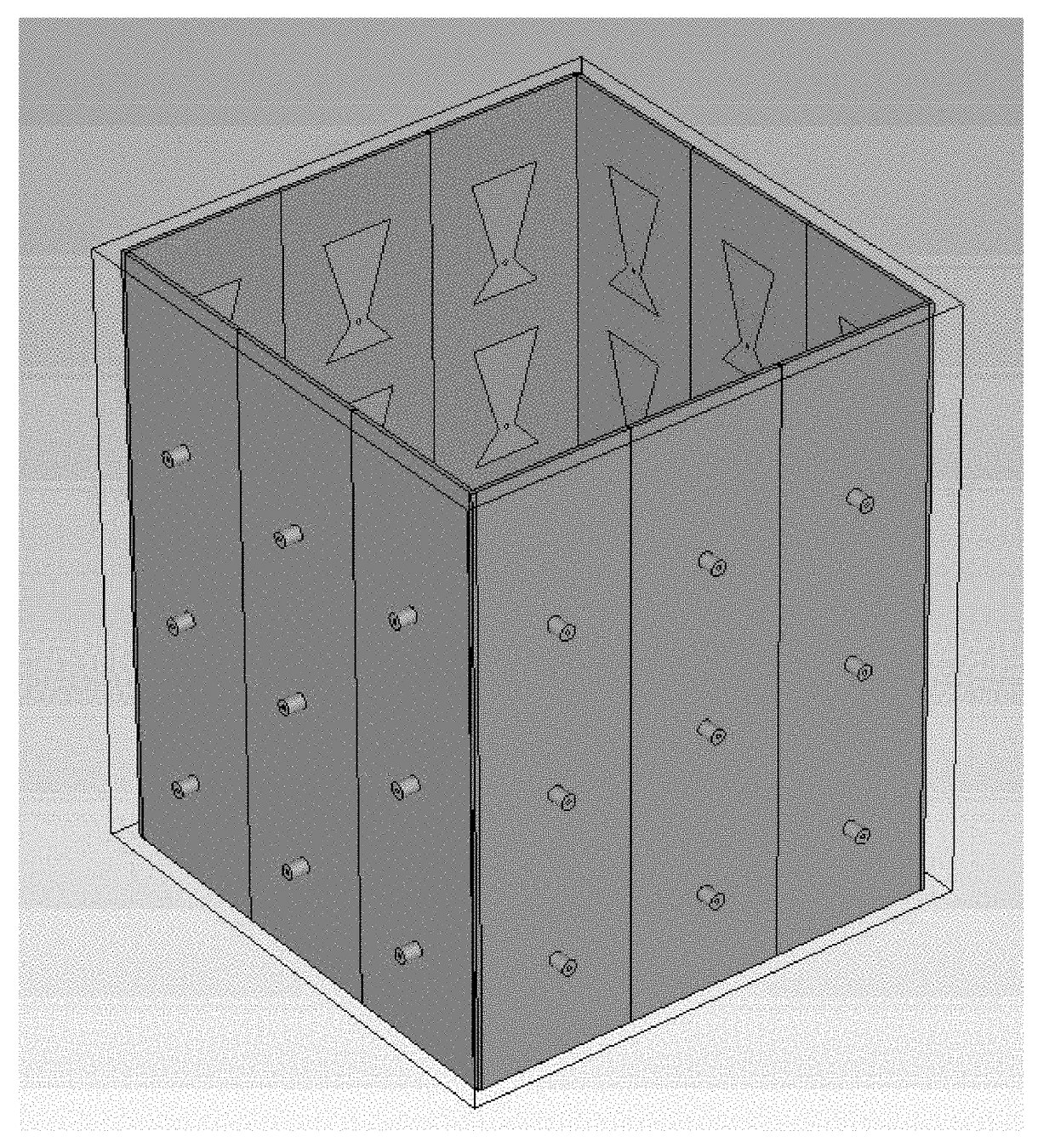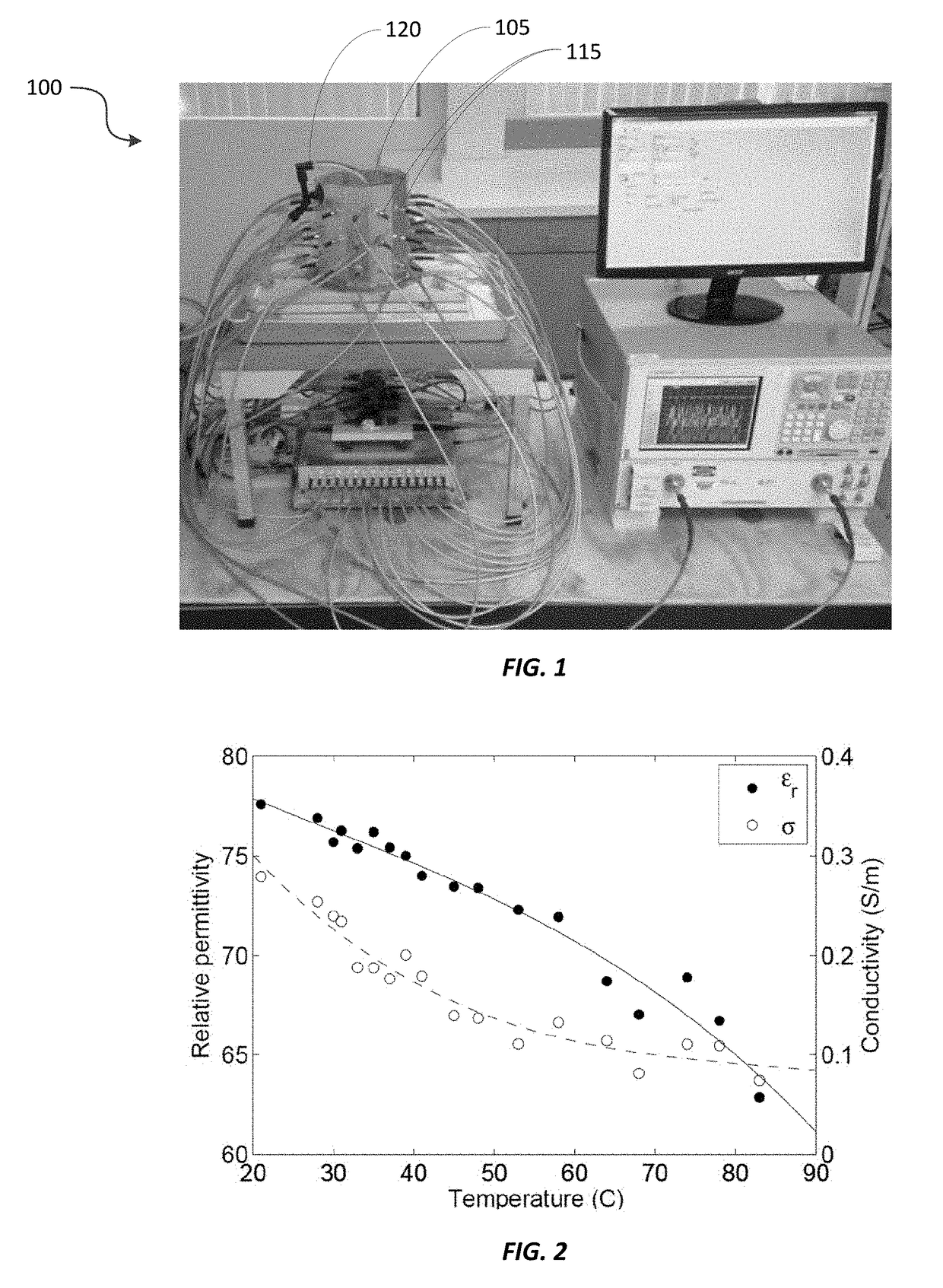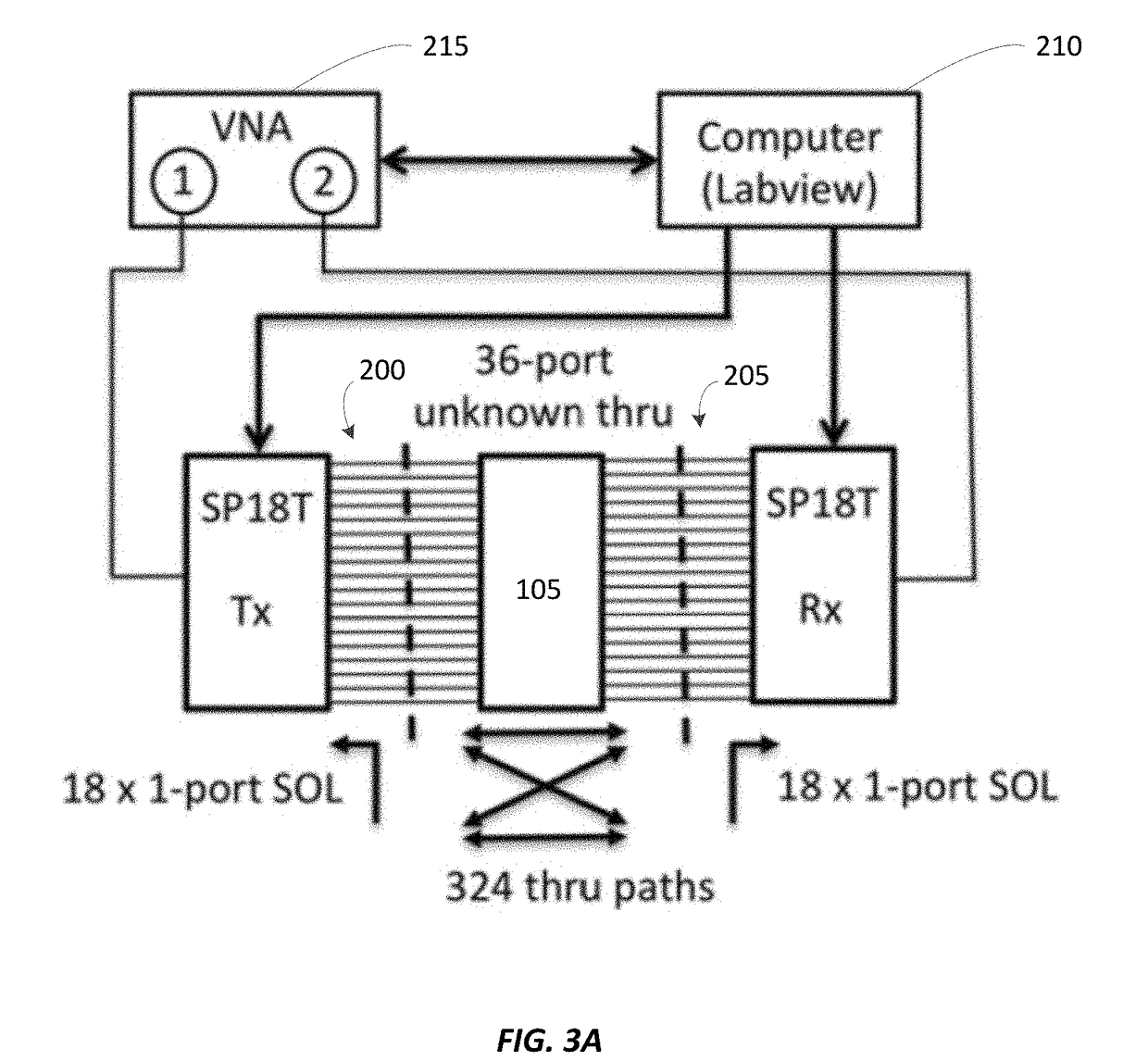Real-time imaging system for monitoring and control of thermal therapy treatments
a real-time imaging and treatment technology, applied in the field of real-time imaging system for monitoring and controlling of thermal therapy treatments, can solve the problems of cumbersome and expensive current standard of mri-based thermal monitoring, and achieve the effects of improving outcomes, safe, rapid and precise adjuvant hyperthermia, and increasing the effectiveness of other treatment methods
- Summary
- Abstract
- Description
- Claims
- Application Information
AI Technical Summary
Benefits of technology
Problems solved by technology
Method used
Image
Examples
example 1
A. Example 1
[0283]First, the numerical vector Green's function is validated in simulation by comparing the simulated S-parameter and the predicted S-parameter from two dielectric objects under waveport source excitation. The simulation domain is shown in FIG. 41. In the simulation region, there are two PEC walls of size 130×70×20 mm3 facing each other 160 mm apart. Within the PEC walls, there are two rectangular apertures. One aperture on the left of FIG. 41 is waveport 1, which has the size of WR-340 waveguide and serves as the transmitter. Another aperture on the right of FIG. 41 is waveport 2, which has the size of WR-430 waveguide and serves as the receiver. Two dielectric objects, which are used to generate the scattered S-parameter, are placed in the middle of the two waveports. One is a rectangular box with dimension 40×40 mm2 and a dielectric constant of 2. On top of the rectangular box, there is a dielectric ball with radius of 20 mm and dielectric constant of 4. The remain...
example 2
B. Example 2
[0286]In this example, the numerical vector Green's function in measurement with a dielectrically loaded two-probe fed rectangular waveguide is validated. The waveguide is hollow brass with WR-187 specifications and an outer dimension of 2.54×5.08×15.2 cm3. The two probes are coaxial SMA extended Teflon flange mount connectors. As shown in FIGS. 43A-43B, probe 1 is located 1.91 cm inward from one corner along both axes and probe 2 is located 2.54 cm and 1.27 cm from the other corner. Here the coaxial feed of probe 1 is waveport 1, and the coaxial feed of probe 2 is waveport 2. Both the excited source at waveport 1 and the received field in waveport 2 are in the TEM mode. The nylon block, which produces the scattered S-parameter has a dimension of 2.40×1.45×5.05 cm3 and a dielectric constant of 3.1.
[0287]The measurement is performed with the vector network analyzer from 3 to 6 GHz with a frequency step of 50 MHz. The whole waveguide is surrounded by microwave absorber. To...
example 3
C. Example 3
[0289]In this example, the numerical vector Green's function in measurement with a square imaging cavity is validated. The imaging cavity is built for inverse scattering experiments and has an outer dimension of 12.2×12.2×15.2 cm3. The four panels of the square cavity are made of Roger 3010 substrate with a thickness of 50mil and dielectric constant of 10.2. There are 36 tapered patch antennas printed on the inside of the 4 panels, and their dimensions are shown in FIGS. 46A-46B. The antennas are designed to radiate into an emulsion fluid coupling material and their resonance frequency is 920 MHz. The measurement is performed near the resonance frequency of the antenna from 900 to 950 MHz with a 2 MHz frequency step. Within this frequency range, the emulsion fluid is measured to have a dielectric constant εr of 19.5 and a conductivity σ of 0.075 s / m. A Nylon block with a dimension of 5.1×5.1×7.9 cm3 and a dielectric constant of 3.1 is placed in the center of the imaging ...
PUM
 Login to View More
Login to View More Abstract
Description
Claims
Application Information
 Login to View More
Login to View More - R&D
- Intellectual Property
- Life Sciences
- Materials
- Tech Scout
- Unparalleled Data Quality
- Higher Quality Content
- 60% Fewer Hallucinations
Browse by: Latest US Patents, China's latest patents, Technical Efficacy Thesaurus, Application Domain, Technology Topic, Popular Technical Reports.
© 2025 PatSnap. All rights reserved.Legal|Privacy policy|Modern Slavery Act Transparency Statement|Sitemap|About US| Contact US: help@patsnap.com



